Dulcimer
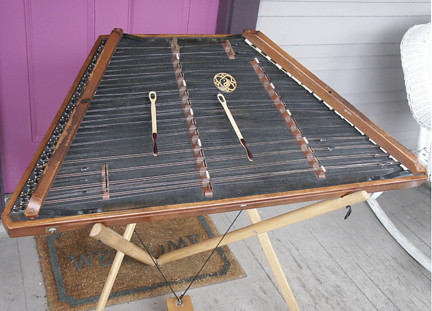
This ancestor of the piano originated in Iran shortly after the birth of Christ. It illustrates the basic principles of the piano, hammers striking multiple strings tuned over a flat soundboard. Instead of mechanical hammers, dulcimer players used two light sticks ending with broader blades.
o0o
Clavichord

First built around 1400, the clavichord was most popular three centuries later in the music of Bach. When a key is pressed, a vertical brass strip (tangent) is lifted toward a pair of strings. The clavichord has a quiet tone, but the way it’s built allows for some control of dynamics and even vibrato.
o0o
Virginal
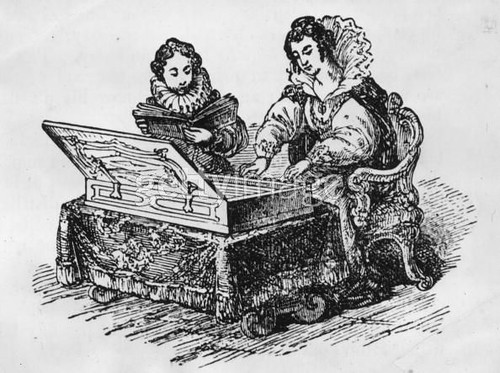
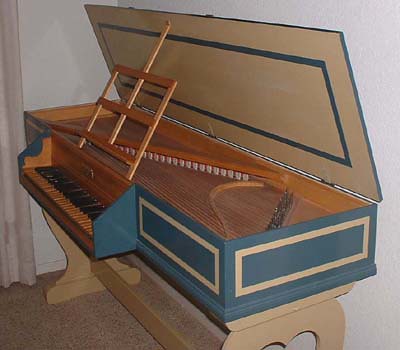
The typical virginal is a small harpsichord with keys at right angles to a single set of strings. When a key is pressed, a vertical rod (jack) holding a leather or quill plectrum rises and plucks the string, producing a louder tone than the clavichord but without its dynamic variety.
o0o
Spinet

Though originating in Italy, the spinet was perfected by English builders in the late seventeen century, about the time of composer Henry Purcell. The jack mechanism plucks the strings just as in the virginal, but the wing shape permits longer strings, increasing the volume and expanding the range to as much as five octaves.
o0o
Harpsichord

Pictured as early as the fifteenth century, the harpsichord form (where the keys are in line with strings) reached its peak in the period of Bach and Handel. In this shape, the pattern for the modern grand, the strings are longer, and the instrument sounds louder than the clavichord.
o0o
Cristofori Pianoforte

About 1709, Bartolommeo Cristofori built several instruments in the harpsichord shape but with hammer mechanisms surprisingly like the modern piano action. Because players could control soft and loud (piano-forte), which was impossible on plucked keyboard instruments, Cristofori named his new instrument pianoforte!
o0o
Piano of Beethoven’s Time
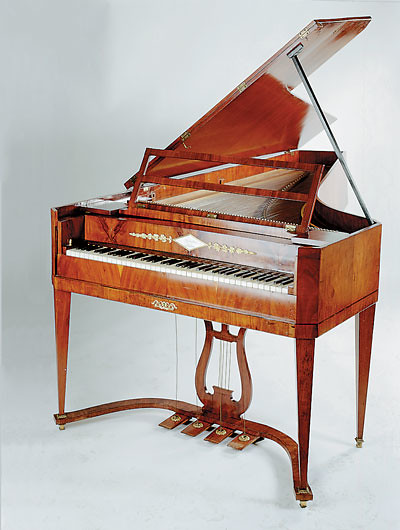
During the eighteenth century, piano builders gradually extended the keyboard. Two important new developments were the escapement action for faster repetition of notes (about 1770 by Stein in Augsburg), and the damper and soft pedals (1783 by Broadwood in London). Special pedals, like the ones in this illustration, were often added to produce exotic effects.
o0o
Upright Piano
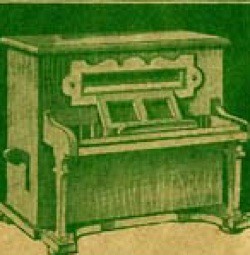
The upright design was already in use for harpsichords in the sixteen century. In the eighteenth century, many builders (especially in Germany) tried to apply this form to the pianoforte. In 1800 the first satisfactory uprights were invented.
o0o
Square Grand Piano

The square piano originated when German builders (especially Johannes Socher in 1742) tried to adapt Cristofori’s pianoforte to the traditional rectangular shape of the clavichord. The square piano was popular until about 1900.
o0o
Piano of Lincoln’s Time

During the ninteenth century, the piano continued to become more powerful and responsive. The outstanding improvements were the double-repetition action of Sebastien Erard (Paris, 1821) which allowed very rapid repetition; and the full cast-iron frame of Alphaeus Babcock (Boston 1825), the basis for today’s extended keyboard.
o0o
Modern Grand Piano
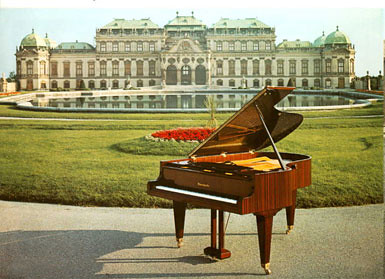
(sưu tầm)

No comments:
Post a Comment